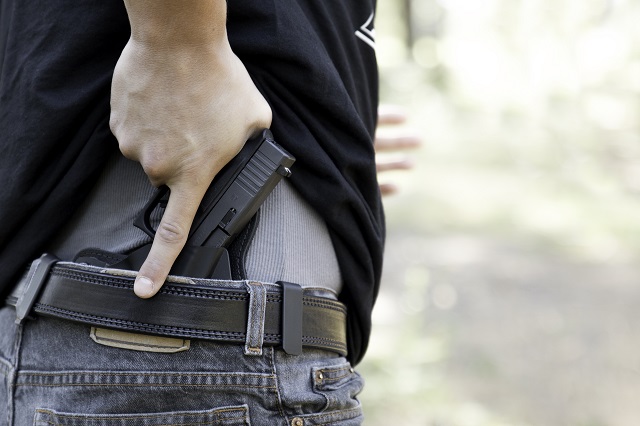In my last post, I mentioned towards the end that this week I would be discussing what I consider to be the root of the debate over gun control. Generally speaking, those arguing over this issue can be divided into two camps; they either consider owning a gun to be a right or a privilege. This is the fundamental difference of belief that results in the argument that is widespread today. If guns are a human right, then any attempt to take them away is a violation of said rights and should not be allowed. If guns are a privilege, then they need to be earned. Without first acknowledging this gap and trying to bridge it there is little chance of any real change happening because the argument will be happening on two separate planes that don’t intersect.
While there are multiple arguments as to why the ownership of guns is a fundamental right, perhaps the most common (and frustrating) argument is that it is a right because it says so in the Second Amendment of the Constitution. This argument makes no sense whatsoever. The very phrase “Second Amendment of the Constitution” implies that the Constitution can be amended, or changed. Stating that just because something is in the Constitution it is permanent is nonsensical. The Constitution is hundreds of years old and will likely last for hundreds more. As times change and technology evolves the Constitution will have to adapt to keep up, that is a simple fact. Arguing that the something being in the Constitution is the be-all-end-all makes no sense when the Constitution itself was not designed to be permanent. Any issue as important as gun control needs to be debated on its own merits, not those of a document that is centuries old.
This is especially true for an issue such as gun control. At the time that the Second Amendment was written, guns were vastly different from what they are today to the point where they are almost not even comparable. At the time of the Constitution a highly skilled shooter could fire around 3 shots per minute with a musket. In contrast, a modern AR-15 assault rifle can fire 45 effective rounds in a minute and at over 10 times the range. Trying to keep laws stagnant is an excercise in futility when the world they are applying to is constantly changing.
The second argument is that everyone should be able to defend themselves and that we shouldn’t have to jump through a series of hoops and brave miles of red tape in order to do it. While I do agree that everyone has a right to defend themselves if attacked, that cannot come at the expense of others. No matter the danger that you are in, putting others at risk to make yourself feel safer is unacceptable. I believe that if someone wants to own a gun, then they need to know how to use it. Otherwise, if they are caught in an active shooter situation where there is a real danger they are just as likely to hurt innocent bystanders as the shooter. If they are unwilling to put in the time and effort that it takes to learn how to use a deadly weapon properly, then they should not be able to use one at all.
The fact is that ownership of a gun does not really meet any of the criteria that are necessary to be a human right. A human right is something intrinsic that cannot be removed. Things such as food, water, and life itself. A gun is not like any of these things. In my view, a gun is a tool with which the right to live can be defended. Access to a tool, no matter how fundamentally necessary it may be, is not a right. Especially not a tool that can be used at the expense of others, either intentionally or unintentionally.
There are very few people who think that every citizen should have unfettered access to guns. Virtually everyone agrees that there are certain people, such as criminals or the mentally ill, who should not be able to own guns. This itself is also indicative of gun ownership not being a right. If it were a human right instead of a privilege then by definition everyone would have it, regardless of legal or mental standing. You cannot deny someone the right to have food because they are a criminal. You cannot deny someone the right to have water because they have a mental illness. Why then can you deny these people the right to own a gun? Because it is not a right at all, but a privilege.



